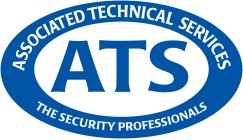Workplace violence is a growing concern for organizations worldwide. Defined as any act or threat of physical violence, harassment, intimidation, or other harmful behavior occurring at the workplace, it poses significant risks to both employees and organizations. In recent years, the need for effective prevention measures has become more critical than ever. This article explores the importance of physical security technologies in preventing workplace violence, discussing various technologies and strategies that can help create safer work environments.
What is Workplace Violence?
The Occupational Safety and Health Administration (OSHA) estimates that 2 million American workers are victims of workplace violence yearly. Workplace violence is any act or threat of physical violence, harassment, intimidation, or other threatening disruptive behavior at work. It can range from threats and verbal abuse to physical assaults and even homicide. It is most typically divided into four categories: criminal intent, customer/client, worker-on-worker, and personal relationship. The most common type of workplace violence is worker-on-worker, which accounts for about 70% of all incidents.
Understanding Workplace Violence
Shockingly, statistics reveal that workplace violence affects millions of workers every year, and its impact extends beyond immediate victims to affect morale, productivity, and company reputation.
Common Physical Security Technologies for Workplace Violence Prevention
Access Control Systems:
These technologies help regulate entry to the workplace. Keycards and biometric systems ensure only authorized personnel gain access, while visitor management tools log and monitor visitors.
Video Surveillance
Strategically placed cameras enable real-time monitoring and recording of activities, providing a comprehensive view of the workplace. Advanced analytics and facial recognition further enhance security measures.
Panic Buttons and Duress Alarms
Panic buttons, provided to employees, enable swift notification of security personnel in emergencies. Stationary duress alarms in vulnerable areas offer an additional layer of protection.
Perimeter Security
Fencing, barriers, and vehicle access control limit unauthorized access to workplace premises, reducing the risk of external threats.
Security Lighting
Well-lit areas discourage potential perpetrators by increasing visibility and promoting a sense of security. Motion-activated lighting also helps in identifying suspicious activities.
Integrating Physical Security Technologies into Workplace Violence Prevention Strategies
Creating a comprehensive workplace violence prevention policy is the first step in effectively integrating security technologies. Conducting risk assessments and security audits helps identify potential vulnerabilities and the best-suited security solutions for the organization. Customizing technology solutions ensures that they align with the specific needs and layout of the workplace. Furthermore, training employees on properly using security technologies empowers them to actively participate in workplace safety.
Top Benefits of Physical Security Technologies
The benefits of employing physical security technologies for workplace violence prevention are multi-faceted. By acting as a deterrent, these technologies can discourage potential perpetrators from committing acts of violence. In the unfortunate event of an incident, real-time monitoring and incident response enable immediate intervention, minimizing the harm caused. Additionally, the evidence gathered by these technologies aids in investigations and can be crucial for legal proceedings. Implementing advanced security technologies fosters a sense of security among employees, promoting a safer work environment.
Addressing workplace violence is vital to maintaining a safe and productive work environment. Physical security technologies provide valuable tools in this endeavor, offering a multi-layered approach to prevention. By investing in strategic technologies, integration, and professional monitoring, organizations can create safer workplaces, protect their employees, and foster a culture of security and well-being. Preventing workplace violence is a shared responsibility, and adopting physical security technologies represents a significant step toward achieving this crucial goal.
ATS has been a leader in commercial and residential security since 1984. If you have any questions regarding minimizing your home’s vulnerability to criminal activities, contact us today! 414-476-4200

















